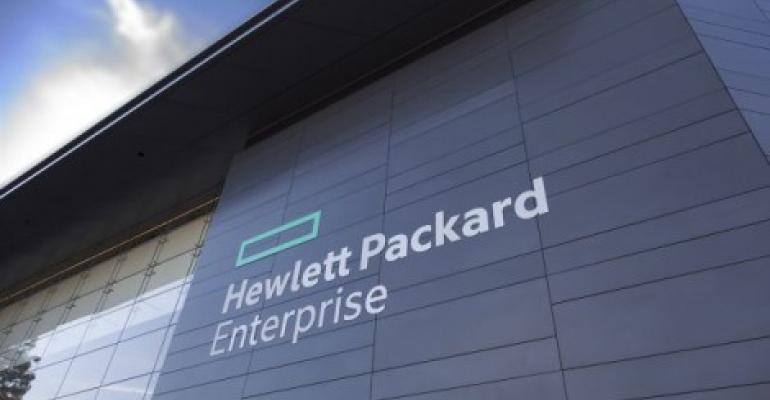Hewlett-Packard Enterprise is beefing up security and making it easier to deploy applications on its GreenLake cloud platform.
At its HPE Discover conference on Tuesday, the company introduced Project Aurora, a cloud-native, zero-trust architecture that detects threats and verifies the integrity of its hardware, firmware, operating systems, platforms and workloads.
Project Aurora verifies that nothing is tampered with every step of the way, from the supply chain to the deployment of workloads.
“What we are providing is a chain of trust, from the silicon to the workload,” said Kumar Sreekanti, HPE’s software general manager and CTO, during a press briefing on Monday.
HPE also unveiled HPE GreenLake Lighthouse, a preconfigured, cloud-native environment with built-in services that allows organizations to deploy workloads more quickly, such as cloud-native apps, said Matt Kimball, a senior data center analyst at Moor Insights & Strategy.
HPE on Tuesday announced these and other new features and services for its GreenLake platform, the company’s on-premises solutions that are offered through a cloudlike, subscription-based, as-a-service model. The company pledged in 2019 to make every product it sold available as a service – and its success has prompted other hardware makers, including Dell and Cisco, to follow suit.
Dell also launched its version of the model in 2019, and in 2020 it introduced Project Apex, promising a single interface for provisioning public cloud resources and its own on-premises products as a hybrid cloud. Cisco announced its own as-a-service strategy in April.
In an interview with the media on Monday, HPE CEO Antonio Neri reveled over the fact that HPE is a pioneer with the on-premises, as-a-service model.
“I welcome their entrance into this space,” Neri said, of Dell’s and Cisco’s offerings. “It validates what we said a few years ago about the world being hybrid, that the world will move to a consumption-driven model, that the edge is the next frontier. It has all taken hold.”
HPE’s announcements on Tuesday advance the company’s vision to offer everything as a service through an edge-to-cloud architecture, he said.
Furthermore, with all the data that’s being generated today, the industry is moving toward an “age of insight” in which enterprise customers want to gain insight from their data – and HPE’s GreenLake platform enables that, Neri said in the press briefing.
Moor Insights & Strategy’s Kimball said HPE’s announcements Tuesday are all important for its enterprise customers – with Project Aurora being the biggest.
Organizations face security challenges, particularly as they increasingly house data at the edge, he said.
Through Aurora, HPE ensures hardware and processors are not tampered with in the supply chain. Once the equipment is installed on a customer’s premises, HPE will use scanning agents to scan the hardware to make sure no bootkits or malware are installed.
The company will also scan the operating system, the middleware platform and the workloads themselves for behavioral anomalies or changes in file patterns and file sizes – anything that looks like a threat.
“Project Aurora provides protection against any one of those attack vectors,” Kimball said. “There are a lot of point security solutions out there. HPE is the first company to take all of this and create an intersecting and overlapping solution, so there are no vulnerabilities. The validated handoff from the supply chain to the infrastructure to the OS and the platform to the workloads … assures there are no gaps in coverage.”
HPE GreenLake Lighthouse is also important because it allows companies to easily ramp up cloud-native environments and applications, Kimball said. “They don’t have to first build out that environment, then build a curated catalog of services.”
HPE GreenLake Lighthouse combines hardware with automation, orchestration and performance optimization software and the container tier, providing customers a standard but configurable environment for hosting their workloads on the GreenLake cloud platform, said Chris Eidler, vice president and general manager for HPE GreenLake Lighthouse and Enterprise Solutions.
HPE on Tuesday also announced:
- Compute Cloud Console. The tool allows organizations to deploy and manage compute resources, regardless of their location, from the edge to the cloud, HPE executives said. The company previously introduced two other consoles: Aruba Central for managing and monitoring networks and Data Services Cloud Console for managing storage.
- Silicon on-Demand. With a single click, organizations can turn cores on and off as they need it, Neri said. Many IT organizations want this capability because it gives them bursting capabilities on a more granular level, Kimball said.
- New on-premises cloud services, including management of electronic health records for health care providers and management of payment systems for financial institutions.
- HPE GreenLake for Splunk, a data analytics service that provides customers with insights to improve operational performance and minimize compliance risk.
- Additional support for Microsoft Azure Stack HCI and Microsoft SQL Server.
- A 5G solution for telcos.
HPE GreenLake Lighthouse is available now within HPE GreenLake cloud services. Project Aurora will become available in GreenLake Lighthouse, HPE GreenLake cloud services and HPE Ezmeral software later this year, the company said. Compute Cloud Console is available by invitation only to GreenLake customers in the U.S. It will be offered to customers in other regions later this year.





